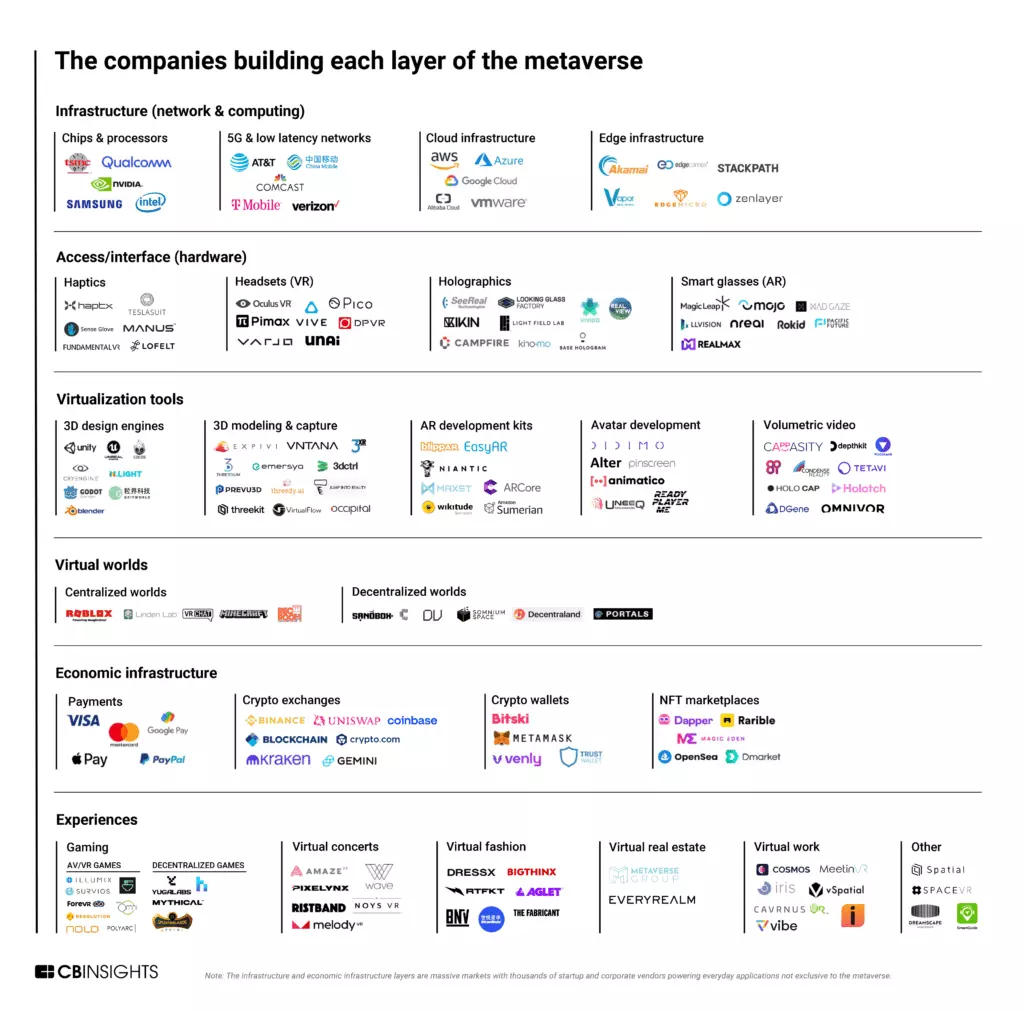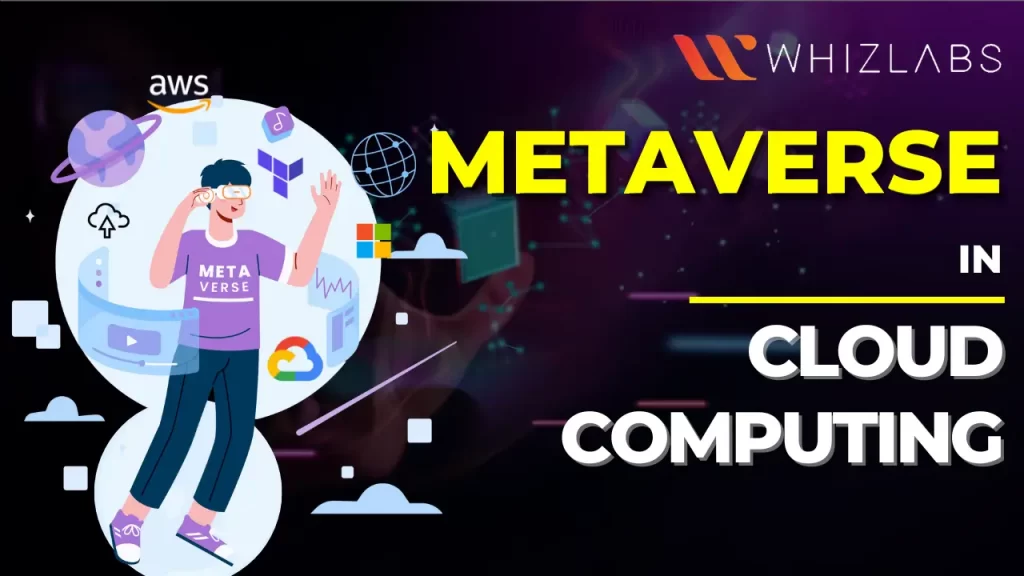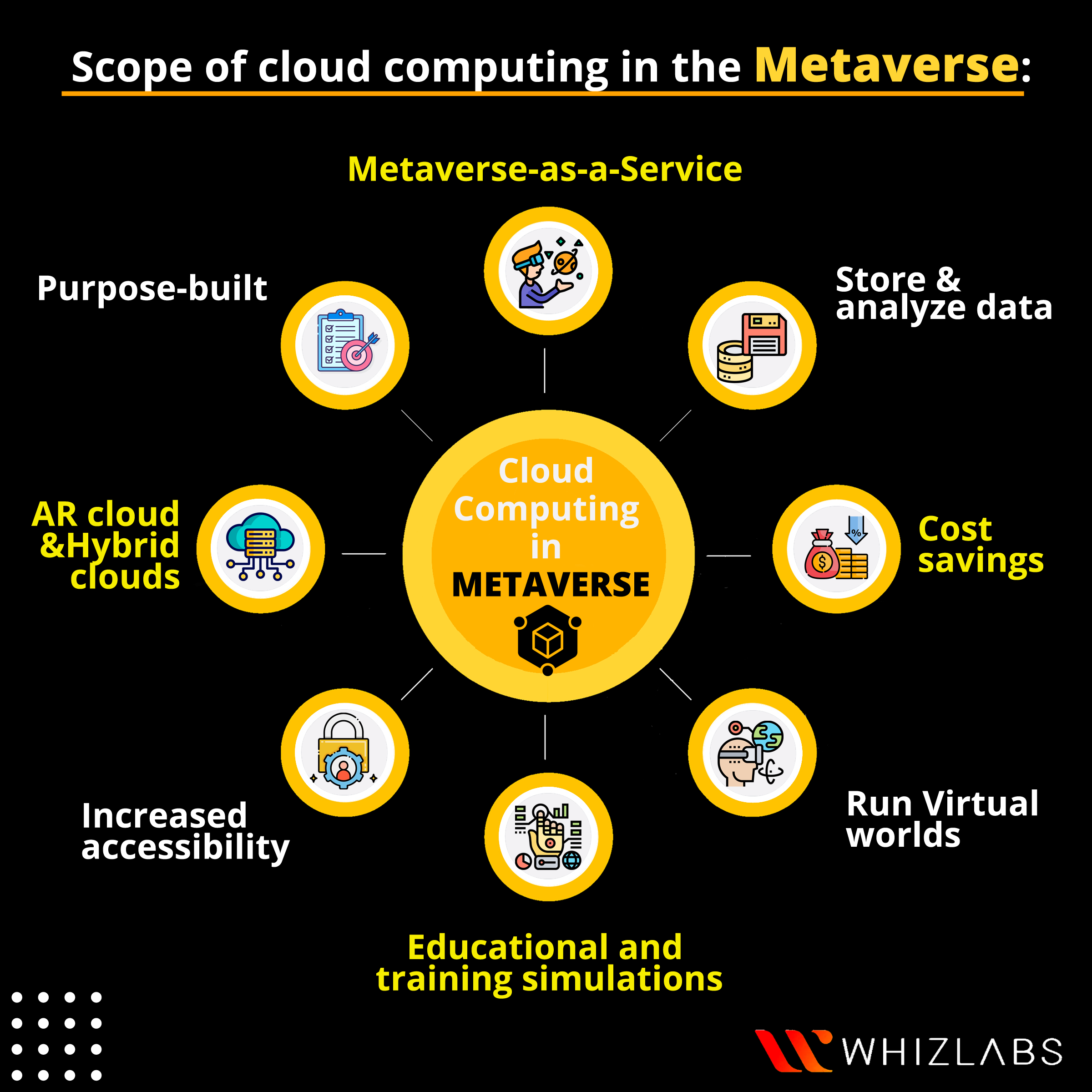By now, we are all aware of the word ‘metaverse.’ BTS performing in the metaverse, celebrities acquiring land in the metaverse, apparel brands creating avatars and showrooms, and what not!
But what does the buzzword ‘metaverse’ exactly mean? And how is it revolutionizing cloud computing? How are businesses leveraging it? What are the pros and cons?
This blog answers all these questions in detail. Let’s dive deeper.
What is metaverse anyway?
The metaverse refers to the interconnection of 3D environments, revolutionizing the landscape of all industries, including IT. Meta means beyond, and verse is universe or planet. So, the metaverse is beyond the universe.
Justifying its name, the metaverse is a replica of our universe with no physical existence. It’s intangible. People from any corner of the world can interact and share real-time experiences in that virtual world. You can go to the movies, shop together, attend concerts, etc.
Metaverse is taking baby steps. With the efflux of time, the metaverse will evolve and require infrastructural remodeling. The transformations would include VR technology, 3D images, more processing power, etc. Facebook is the pioneer of the metaverse, followed by Microsoft, Adobe, Tencent, and Autodesk.
Basically, every element, particle, and humans are immersively and truly connected with each other, no matter how far from each other they are. We can stay all over the space without moving an inch from our current state. That’s the type of interconnected 3D space we are talking about.
Unfortunately, despite all the hype and buzz, the metaverse is still a fuzzy concept for many people, and it often becomes difficult to reach the true definition. On the other hand, Gartner predicts that MR, being one of the vital tech trends in 2022, will reach a global market of $300 billion in 2024.
And that 25% of internet users will spend at least one hour daily on the metaverse to shop, share wearables, entertainment, work, etc. If you want to make the most of this trend and enhance your outcomes, you need to understand the role of the metaverse and why you need to intertwine it with cloud computing.
According to Cbinsights, the metaverse is a constantly evolving and expanding topic, and created a framework below to help you navigate it. Here shows the break down the metaverse into distinct technological layers and highlight the key vendors who are working to make the metaverse a reality.

Metaverse and cloud computing: What’s the relation?
The Metaverse and cloud computing are inseparable and will remain interconnected. The metaverse will force companies across industries to shift to cloud infrastructures to hold their virtual worlds. Organizations will migrate workloads in innumerable quantities and give way to more innovations to model their virtual worlds.
Building a metaverse is almost impossible without highly available and scalable premises and hosting grounds. As the metaverse matures, it will add more layers of complexity. You will need a solid base to hold on to the heavy replica planet and provide a seamless experience to the users without any integration hassles or other bottlenecks at the backend.
It also means, organizations need more cloud administrators, architects, data scientists, cyber security experts, and developers, paving the way for more job opportunities for Gen Z.
So it’s actually safer to say that the metaverse and cloud computing will coexist with each other. If nothing, the metaverse would mean more clouds. Here’s how:
- Hosting virtual 3D environments would be heavier and need countless storage and computing resources. For organizations who want to build their own metaverse platforms, creating room for cloud services will not be a choice but more than mandatory. It’s next to impossible to scale while spending precious dollars on hardware, making cloud service providers wealthier than ever. Brace up, cloud vendors and professionals!
- Second, getting the metaverse up and running with so many users across the globe will not be a cakewalk. You need to ensure the strongest forts that are hard to crack and create security breaches. Sadly, building such invincible gateways with weaker premises or self-procured hardware will not be easy. Only advanced cloud services can help businesses secure the metaverse, improve privacy and manage added complexities while ensuring zero loss of any value.
Learn more about using virtual private clouds: The Advantages of Using a Private Cloud Over a Virtual Private Cloud (VPC)
Scope of cloud computing in the metaverse
To improve privacy, security, dependability, and scalability, the metaverse bolsters its current local infrastructure with a robust foundation and comprehensive capabilities of cloud technology. It will also leverage additional cloud technology processing, storage, database, and security services. In the days to come, cloud computing will provide countless under one umbrella for metaverse builders and users. Some of them would include the following:
Purpose-built or specialized cloud for the metaverse
Shortly, as the metaverse progresses, there wouldn’t be just any hosting platforms. Cloud providers would start developing environments dedicated especially to the metaverse. It would be highly relevant given the mammoth size of workloads that would need to be migrated to the cloud so many times a day. Generic cloud services might not be able to cater to the huge storage requirements.
Basically, big cloud providers focus more on supplying GPU-enabled virtual machine instances, which doesn’t always help enhance the efficiency of the virtual space. This leaves room for upcoming and small-scale cloud providers to develop relevant capabilities and capture the niche.
AR cloud for the metaverse
After the purpose-built cloud, the introduction of the AR cloud comes second on the list. The AR cloud would include an emerging 3D map of the virtual planet overlaid onto the actual universe. The AR cloud will bolster the experience and info, tie them together, and send them to a physical location.
As we are saying, the metaverse is a replica of the real-world planet we live on, so there will be a million channels and touchpoints and countless interactions among avatars. Managing them would be possible only when capabilities like the AR cloud help companies knit the components together and present them to real minds in a decipherable format.
Hybrid clouds for the metaverse
Bandwidth issues and internet outages would be common problems for the metaverse owners, leading to high disruptions for both users and providers. That, and data breaches and loss of personal information, would make it hard to rely on conventional cloud computing infrastructures. This is where hybrid clouds will come into play.
Hybrid clouds will help providers increase operational efficiencies while hosting metaverse and eliminate outage issues by bringing hosting resources in close proximity to end users. Conversely, it will ensure that no personal information is exposed on the public cloud and keep it on private servers, thereby providing super protection to the data.
Metaverse-as-a-Service
Yes, this is a possibility. In fact, it will be the future of managed services. Hosting the metaverse will bring numerous offerings to the table. Just like when you shift to Azure infrastructure, you get innumerable solutions to increase the efficiency of Microsoft resources and learn to develop solutions compatible with the existing Microsoft applications and Azure environment.
Similarly, cloud providers focusing on the metaverse will build metaverse-compatible solutions to help companies establish their virtual space at lightning speed.
Upcoming trends in cloud computing in the metaverse backdrop
Before you jump onto the metaverse bandwagon and start selling lands wearing VR glasses, take a step back to analyze the trends that may change the current metaverse cloud landscape in the time to come.
- The emergence of purpose-built, specialized and private clouds doesn’t mean public cloud builders won’t share a room. Public cloud providers will help companies build data centers and design graphic and compute-intensive ecosystems to operate in the metaverse.
- Second, the pay-as-you-go model would gain more traction as organizations would already be struggling with the expenditures of building out a virtual space. The models would include access to computing and storage on the go. Cloud services will help them enjoy distributed touchpoints across the globe, removing delays in transferring rendered graphics back to end-users.
- Despite being in their infancy, most of us are already familiar with the knick-knacks of both the metaverse and cloud computing. But to differentiate in this space, you would need to understand where and how to apply metaverse in a business and make it relevant for business. For this, you can:
– Gain an in-depth understanding of the technology first. Learn the nitty-gritty of VR processing and how to use it to build relevant metaverse services. To achieve this feat, you can enroll yourself in certification courses imparting knowledge on VR development.
-Figure out where and how you are going to implement the metaverse. Don’t just rush behind the bitcoin and NFT hype. Build a use case and then proceed.
Summary
Hope this blog helps you understand the significance of cloud computing in the metaverse. Remember that cloud computing and the metaverse will always depend on each other in the future and will always overlap. It might seem way too early to say that cloud computing will change head over heels in the coming days.
But sharpening your cloud computing skills to build metaverse solutions is definitely going to be a highly demanded tech ability in the future job market.
Speaking of the future, one of the quintessential offerings for cloud providers will be metaverse-as-a-service. Either this or they will introduce a separate cloud product line that will focus only on the metaverse solutions in a way that other big cloud providers won’t.
- Which AWS Certification is Best For Developers - December 5, 2023
- Top Popular Hands on Labs for Google Cloud Platform (GCP) - October 29, 2023
- 7 Exam Tips for Google Cloud Database Engineer Certification - September 21, 2023
- What Is Azure Web Application Firewall (WAF)? - September 8, 2023
- The 5 Best Team Chat Apps for Business in 2024 - August 10, 2023
- What is Microsoft Cybersecurity Reference Architectures? - July 31, 2023
- How to Secure & Migrate your SAP Environment on AWS - July 26, 2023
- A Comparison of SUM-DMO and SWPM - July 21, 2023



Very informative post it was. Thanks for sharing this post with us.